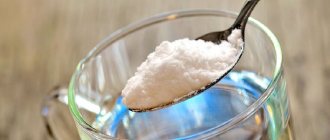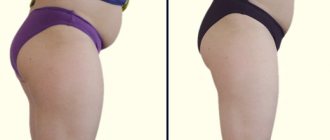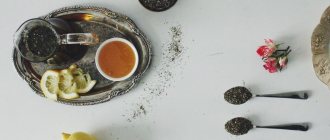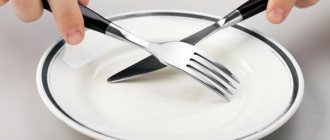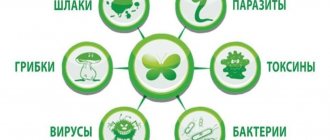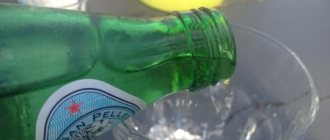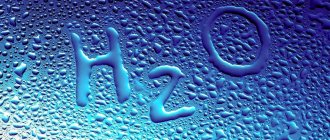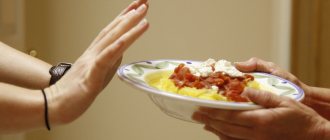There are dozens of methods of therapeutic fasting, each of which has certain features, advantages and disadvantages. One of the most effective is the Nikolaev system. The author not only successfully practiced it, but also published several books detailing the mechanisms of action and possible effects.
It is fasting according to Nikolaev that doctors most often recommend for medicinal purposes. It is carried out in a hospital setting under the supervision of specialists. But some fasters successfully practice it at home. The duration of the entire course is three weeks. But more about everything.
The essence
Firstly, fasting according to Nikolaev is fasting on water. It is not dry, suggesting abstinence only from food. Secondly, its main purpose is to improve the health of the body, which is why it is called medicinal.
Yuri Sergeevich himself did not like the term “fasting”, so his system has a different name - fasting-dietary therapy. He always drew attention to the fact that his methodology is two closely interconnected parts and one cannot exist without the other. The first is directly abstaining from food. The second is the recovery period or exit. Without it, according to the professor, positive results cannot be achieved.
How does Nikolaev’s system differ from other similar ones:
- physical activity is recommended;
- there are indulgences (for example, honey during periods of crisis, rosehip infusion daily);
- carrying out medical procedures (special type massage, physiotherapy);
- supervision of a specialized specialist is required.
The system is not as strict as some other proprietary methods, so many people who want to try therapeutic fasting prefer it. According to the majority, throughout the course they are given strength by the idea that they can drink water at any time, rosehip infusion is allowed 4 times a day, and in case of a crisis, honey can be consumed.
Advantages and disadvantages of fasting-dietary therapy
Any therapy has pros and cons. The fasting system, developed by Doctor of Medical Sciences Yu. S. Nikolaev, also has advantages and disadvantages.
Among the advantages are the following results achieved by the technique:
- cleansing the body of accumulated water, fat, salts, waste and toxins;
- quantitative reduction of sclerotic plaques;
- resumption of work of the liver, pancreas, spleen;
- getting rid of excess weight;
- healing from a number of chronic diseases;
- clearing the mind, finding peace, tranquility;
- increase in internal energy;
- the emergence of interest in life;
- strengthening metabolic processes;
- reduction or complete elimination of inflammatory, infectious foci and tumors;
- resorption of adhesions, edema, neoplasms;
- increase in the body's defenses.
This list of advantages of fasting-dietary therapy is not complete. In his works, the professor lists many processes that occur in the body during a food break and have a positive effect on human health.

There are also negative aspects of the technique:
- Presence of contraindications;
- The inevitability of side effects;
- low mood;
- dizziness;
- stomach ache;
- bad breath;
- the appearance of plaque on the tongue;
- headache;
- irritability;
- weakness;
- nausea;
- cloudy urine;
- rapid weight loss.
The above symptoms appear on days 5-7 during wet fasting, and on days 3-5 during dry fasting. If you have experience with food breaks, side effects go away easier, and the acidotic crisis occurs faster.
Effect on the body
Yu. S. Nikolaev first studied the theory of therapeutic fasting for a long time, from antiquity to modern days. Then, together with a team of scientists, he conducted his own research to find out exactly what happens to a person when he abstains from food for a long time. He describes the results of his research in detail on the first pages of his book.
After food stops entering the body, it is forced to switch to internal nutrition, for which it uses accumulated reserves. In order to spend them, almost all organs and systems begin to work in enhanced mode.
Nikolaev proved that during fasting days, through the lungs, urine and intestines, relief occurs from:
- fat cells and harmful substances formed as a result of their breakdown;
- "dead" water;
- insoluble deposits in joints;
- excess salt deposits;
- toxins, toxic compounds.
Result:
- the supply of oxygen to cells improves, as the speed of blood flow increases;
- sclerotic plaques resolve;
- pathogenic microorganisms in the intestine die, its microflora is normalized, congestion in the abdominal cavity is eliminated;
- biochemical changes occur in the heart muscle, it strengthens - the risk of heart attacks and ischemia decreases;
- vision improves;
- in the process of autolysis, pathological, painful cells, congestive edema, and adhesions are disposed of;
- brain activity is activated;
- blood pressure stabilizes;
- impaired metabolism is restored.
On the 4th day of fasting, a person loses the desire to eat. Nikolaev explained this by the production of the neurohormone cholecystokinin, which suppresses appetite. But these are not all of its useful functions. Thanks to him, addiction to smoking, alcohol and drugs disappears. Moreover, after completing the treatment course, she never returns.

And, of course, there is a noticeable weight loss: about 18% of the original value.
Based on the effect that therapeutic fasting has on the body, Nikolaev called it an operation without a knife.
Contraindications to the treatment method
Fasting is a contraindicated treatment method for pregnant and lactating women, children and the elderly, as well as for the following diseases:
- tuberculosis;
- type 1 diabetes mellitus;
- thrombophlebitis;
- implanted organs and tissues;
- thyrotoxicosis;
- circulatory disorders;
- dysfunction of the endocrine system;
- cancer.
If there are no contraindications, you can consult with an experienced specialist about the system, get additional information about Nikolaev’s method, or buy his book, where he describes fasting treatment in detail. His system has been tried by many people and received positive reviews.
The article was approved by the editors
Preparatory stage
The professor insisted that before starting a fast, everyone should undergo a full medical examination. A therapist and a neurologist are among the first specialists you should visit. Tests of stool, urine, blood, as well as an electrocardiogram and electroencephalogram are required. We need data such as height, weight, age, constant pressure and pulse. Based on them, the doctor determines the duration of the course (from 2 weeks to 40 days).
Then a detailed consultation is carried out so that the person is mentally adjusted. Being a psychotherapist, Nikolaev paid special attention to this. He is briefly introduced to what will happen to the body, what requirements must be met, and the results are described in detail (a kind of incentive is given).
Physical preparation is minimal: after lunch, the intestines are cleansed with a saline solution. From the moment of its introduction, we can assume that fasting has begun: medication is stopped and abstinence from food begins.
A course of treatment
Therapeutic fasting according to Nikolaev is a whole complex of procedures for cleansing and healing the body. So don’t expect to be able to lie down and relax. This technique is one of the most active.
Daily regime
- Enema
The morning of each day begins with a cleansing enema.
- Bath (shower)
Mandatory in the morning of every day, since decay products formed in the body also come out through the pores. They need to be eliminated in a timely manner.
- Massage
At home, it is impossible, since a professional massage of a certain type is required - pressure. Imagine that someone is dancing on your back. Approximately the same sensations occur after this procedure. The main goal is to hyperemia the skin and crush the thoracic and cervical spine.
- "Breakfast"
Drink a glass of rosehip infusion. The recipe is simple: in the evening add 4 tbsp. l. dry fruits with 4 cups of boiling water in a thermos. Strain in the morning.
- Afternoon set of events
After breakfast, half an hour is allotted for passive rest. It is recommended to lie down and read. After this, a long walk is necessary. Moreover, it is imperative to dress as warmly as possible, because during fasting the body temperature decreases and a person quickly freezes. In the fresh air, Nikolaev prescribed breathing exercises for his patients. You can take water with you (the estimated daily intake is 1.5-2 liters, but it may vary depending on individual characteristics).
- "Dinner"
Another glass of rosehip infusion. If desired, it can be replaced with plain water or Borjomi.
- Afternoon activities
Another half hour rest. Individuals then ideally attend the physiotherapy treatments prescribed during the pre-screening. Usually this is UHF therapy (exposure to a high-frequency electromagnetic field), diathermy (warming with electric current), Charcot's shower, medicinal baths. This point will allow you to understand once again that Nikolaev’s method is intended primarily for inpatient treatment in a health center or sanatorium. At home, such a set of activities is not available.

Yu. S. Nikolaev in his method recommends long (20-30 km) walking, which distinguishes it from other proprietary fasting methods
In your free time from procedures, it is recommended to engage in occupational therapy (work with the soil, clean up), games (board and outdoor), and hobbies (drawing, embroidery, knitting). Walking in the fresh air is encouraged.
- "Dinner"
Drink another glass of rosehip infusion.
- Evening set of events
After dinner, Nikolaev advises all hungry people to do what gives them pleasure. It does not prohibit watching TV or actively communicating with each other. His treatment center hosted discos every evening after dinner.
- A set of activities before bedtime
Drink the last glass of rosehip infusion of the day. Water procedures are required: brushing teeth, gargling, and, if desired, a warm shower.
- Dream
Nikolaev paid great attention to the organization of sleep. The room in which the fasting person sleeps must be ventilated or well ventilated in advance. Be sure to have a warm blanket (again due to reduced body temperature). In recent weeks, the professor recommended going to bed with hot water bottles. If possible, change them during the night.
Stages
During fasting, the body has to overcome stages, which Nikolaev informs his patients in advance, so that they know which sensations at which stage arise within the normal range, and which ones should be immediately reported to the doctor and, possibly, the trial should be stopped.
Stage 1. Food excitement
Terms: 1-3 days.
Feel:
- excessive salivation;
- severe attacks of hunger, feeling of emptiness in the stomach;
- insomnia;
- lethargy, drowsiness, irritability and even aggression, bad mood;
- increased heart rate.
Weight loss: minus 1 kg per day.
Stage 2. Increasing acidosis
Terms: 3-5 days.
Feel:
- the feeling of hunger dulls or disappears, but thirst increases;
- slow reactions;
- in the morning migraine, nausea, weakness, it can be difficult to get out of bed;
- coating on the tongue, dry mucous membranes, acetone odor from the mouth;
- pale and dry skin throughout the body;
- hypotension;
- rare pulse;
- deep breathing.
Weight loss: minus 0.5 kg per day.
Stage 3. Compensation
Timing: from 6 days onwards.
Feel:
- improvement of well-being and mood;
- a surge of strength, energy, vigor;
- disappearance of plaque on the tongue;
- sparkle in the eyes;
- cleansing the skin of rashes and dryness;
- normalization of pulse and blood pressure;
- restoration of mental balance (bad thoughts, depression, anxiety go away).
Weight loss: minus 200 g per day.
The duration of this stage is different for everyone. The end is considered to be the time when a brutal appetite appears.
Sagging skin
If the patient is very overweight, or if he suffers from morbid obesity, then fasting will certainly lead to sagging skin. No physiotherapeutic procedures can protect you from this.
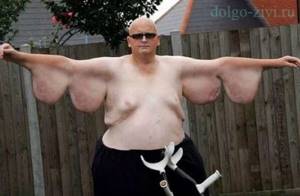
A rough estimate of how much “extra” skin you have is quite easy. The density of the human body is approximately equal to the density of water. If you want to lose, for example, 5 kilograms, then take a jar of the appropriate volume and look at its surface. Your body will have to “tighten” almost the same area of skin when losing weight.
Now think about whether it’s worth losing weight using “impact” methods? Wouldn't it be better to take it slow but surely, rather than starve for a month and then either flaunt huge folds of skin like a rhinoceros, or cut off extra pieces of yourself? A low-calorie diet and increased physical activity make the process of recycling excess fat and excess skin slow, but very effective, and nothing sag.
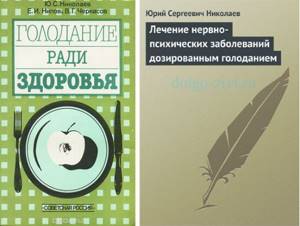
So, dear readers, if you are interested in Nikolaev’s method, and you want to try fasting at home, then you must first consult a doctor, undergo a full examination, and also study the method of the recovery period. To do this, you need to carefully read the books by Yu. S. Nikolaev “Fasting for Health” and “Treatment of Neuropsychiatric Diseases by Dosed Fasting,” in which he describes his method in every detail.
Recovery period
Nutrition
After the end of fasting, you need to go through another stage of the treatment course - follow a diet. In his book, Nikolaev offers the following scheme for breaking out of 20-day abstinence:
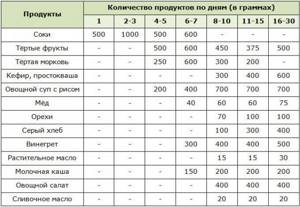
The amount of food is designed for a person of average build, so it can either be increased for obese people or reduced for thin people. In this matter, it is advisable to consult with specialists.
The table can be adapted for a course of any length. For example, you need a way out of a 10-day fast, but this program is designed for 20 days. You just need to halve the number of rehabilitation days. That is, grated fruits can be eaten not on the 4th day, but already on the 3rd day, etc.
Special Notes on the Recovery Diet
- Recommended juices: apples, grapes or carrots. Drink in small sips, keep in your mouth for a long time, mix with your own saliva, enjoy the taste.
- On the first day of release, the juices should be diluted with water in equal proportions. They should be homemade, freshly squeezed, without adding spices.
- Recommended porridges are buckwheat, millet, rice, oatmeal. They should be as liquid as possible (as Nikolaev himself calls them, “smears”). They need to be chewed thoroughly and for a long time.
- If you are on a hunger strike in winter and you cannot get fresh fruits and vegetables, you can eat canned, frozen and dried ones. But you will have to chew them more thoroughly.
- Kefir can be replaced with any other fermented milk product.
Recipe
Nikolaev gives his own recipe for vinaigrette for the recovery stage.

Cut: 250 g of boiled new potatoes, 50 g of fresh white cabbage, 5 g of onions. The following are grated: 100 g of fresh carrots, 80 g of boiled young beets. Next, all this is mixed, seasoned with 15 ml of vegetable oil and 1 tsp. lemon juice. The resulting portion is divided into 2 parts and eaten at different meals.
Prohibited
- Salt;
- meat;
- eggs;
- mushrooms;
- alcohol, tea, coffee;
- everything fried;
- smoking.
And the most important thing! Throughout the recovery period, you should adhere to the same daily routine that was established during fasting. That is, enemas, baths, massages, physiotherapy and walks continue to be performed.
Stages of rehabilitation
During rehabilitation, the body goes through 3 more stages.
Stage 1. Asthenic
Terms: 1-3 days.
Feel:
- 100 ml of juice is enough to satisfy hunger, but after half an hour the ravenous appetite wakes up again;
- weakness;
- mood swings;
- diarrhea;
- rapid pulse;
- frequent, intermittent breathing.
Weight loss: minus 200 g per day.
Stage 2. Intensive recovery
Terms: 4-21 days.
Feel:
- attacks of severe hunger;
- a surge of physical strength;
- improvement of well-being;
- increased mood;
- stabilization of blood pressure and pulse;
- normalization of stool.
Weight loss: stops, weight gain is observed.
Stage 3. Normalization
Timing: last days of the recovery period.
Feel:
- appetite becomes controlled;
- leave constant thoughts about food;
- smooth, calm state;
- weight stabilization.
After completing therapeutic fasting, Nikolaev recommends undergoing another medical examination.
The recovery period must coincide with the duration of the hunger strike. Have you fasted from food for 20 days? So the diet should be followed for the same amount of time.
Physiology of fasting
Why do we become weaker during fasting? Because within two days we run out of glycogen (glucose) reserves in the liver and muscles. Muscles become less voluminous mainly due to the loss of water, not protein structures. The percentage of muscle mass can be determined relatively accurately using bioimpedance measurements.
When we fast, for the first 2 days we exist on glycogen stores. If we move actively, then less. Afterwards, the process of glucoseogenesis (glucose synthesis) begins. We can synthesize glucose from various components, including amino acids. When glycogen runs out, along with glucose synthesis, the process of fat breakdown is activated. And glucose is well synthesized from the fat component glycerol.
During hunger, from the 2-3rd day, our muscles begin to work on fats. By the way, our heart always runs on fats. And muscles in everyday life are powered by glucose and fats.
When our fats break down, ketone bodies enter the blood. It's like exhaust gas from burning gasoline. They are the ones who spoil our well-being during fasting (weakness, nausea) by entering the blood. Acetone is one of their components.
After a few days, the brain begins to use them as a source of energy. And as it turns out, periodically switching the brain from glucose to ketone bodies is very useful. This process occurs very smoothly and gradually. Every day a little less glucose, a little more ketone bodies.
Fasting thinking is slower, but with higher efficiency. This can be used by people with mental work. During hunger, reactions are generally slower, incl. and vascular.
Autophagy
Yoshinori Osumi in the 90s. explained the essence of autophagy, for which he received the Nobel Prize in 2021. Autophagy is one of the processes that starts during hunger. In a cell, like in a city, waste products are generated that are not so easy to remove. The cell coexists with this waste. When you are fasting, every cell in your body knows it. And the cell turns into an advanced European country and begins to recycle its garbage. The output is energy and building material. The cell becomes more autonomous and solves several problems at once. But what this clinically means for us is difficult to say.

Yoshinori Ohsumi is a Japanese molecular biologist who received the Nobel Prize in Medicine or Physiology in 2021 “for his discovery of the mechanisms of autophagy.”
Additional recommendations

Deadlines
Most of the author's methods clearly state the time frame for how many days it is recommended to abstain from food (and sometimes water). As a rule, these are increasing, so-called cascade schemes: the body is accustomed to a one-day fast, which means it’s time to do a two-day fast, etc.
Nikolaev has a different approach. Despite the fact that his system is simple enough to be used even at home (except for procedures), the professor warns that the duration should be determined by a specialist, based on individual characteristics. For example, if a person has only 5 extra pounds and minor health problems, he can be on RDT for 30-40 days. Those who suffer from obesity and serious chronic diseases should not test their body for more than 2 weeks.
Sometimes fasting ends prematurely if the body has already achieved the desired results and there is no need for further abstinence. Clinical indicators for this are:
- a healthy appetite awakens;
- a fresh complexion and skin throughout the body is observed (acne and pimples disappear);
- tongue is cleared of plaque;
- bad breath disappears;
- Discharge stops after cleansing enemas in the morning.
Fasting record
Documented record: 382 days. Key point: initial weight 207 kg. The man's age is 27 years.
Having lost weight to a normal 70-80 kg, he managed to maintain it throughout this entire period. After he was observed by doctors for 5 years, no negative consequences were found.
True, he received correction for electrolytes and vitamins. At the same time, he lived an ordinary life. His glucose levels were monitored every day to rule out cheating.
